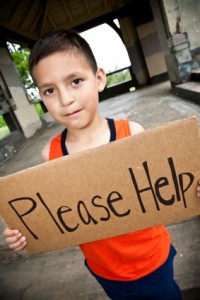We work on ourselves in order to help others, but also we help others in order to work on ourselves.” ~ Pema Chodron
I just spent the past few days listening and watching an amazing case study in real time. Have you heard of the campaign to send 1 million shirts to Africa?. If not, google it and read the many blog post written in support or opposition of it. Some of you might not think that it was a very savvy idea, but for me it did bring up a critical point. Ultimately this guy just wanted to help– he wanted to do good. I commend him on his drive and big heart. I do not want this experience with a failed idea to crush him or his dream. I want to encourage him to keep learning, failing, dreaming and working hard. That is what helps all of us grow. I would also like to offer him one piece of advice, offered to him with love and compassion:
You have to KNOW people, their lives and stories BEFORE you can offer help.
If we took a quick survey in Africa – How many people would choose a 1 millions shirts over malaria drugs or accessible clean water? 1 million shirts vs.1 million new jobs? I am not going to assume I know which option would be more popular or is the most needed. I do not live in Chad, Niger, Kenya or Tanzania and never have, because of that I will not speak for others.I have been in the business of working with communities in need for the past 20 years I have learned a few things , the main one being: Helping others is about listening to their expressed needs.
In successful projects the reciepient and the donor are partners. Equal partners– helping, learning,working and laughing together in the most perfect of worlds. Partnerships are built through conversation, connection and collaboration.They take time. Years and years and years and years.
Relationships are key. You must create connections in neighborhoods, schools, businesses, congregations, and other settings across all generations. Formal relationships may become less important as “natural” relationships, networks, and activities emerge.
Everyone contributes to the vision. In an asset-building project, problem solving is not the sole responsibility of the professionals or the donors. All members—parents, neighbors, young people, educators, business people, senior citizens, congregation members, and others—are guardians of the community and have amazing stories, assets and history to bring to the table and they have to be deeply engaged in any proposed solutions. Let them.
The project is holistic. If you spend time working on an asset-building community project, you quickly need to communicate clear consistent messages to the community. Just as marketers have learned that people need to hear a message several times before they fully grasp and act on it, the asset-building community knows that a community need to experience many expressions of care, guidance, and opportunities in all areas of community life.
Ultimately this discussion and this post is less about sending a million t shirts or flip flops or anything else to Africa. At its core its about lessons learned and solutions. Its about the connection that makes us all human.Its about personal growth and community growth. Its about being humble and open.
Meaning well and doing well really are two different things.

